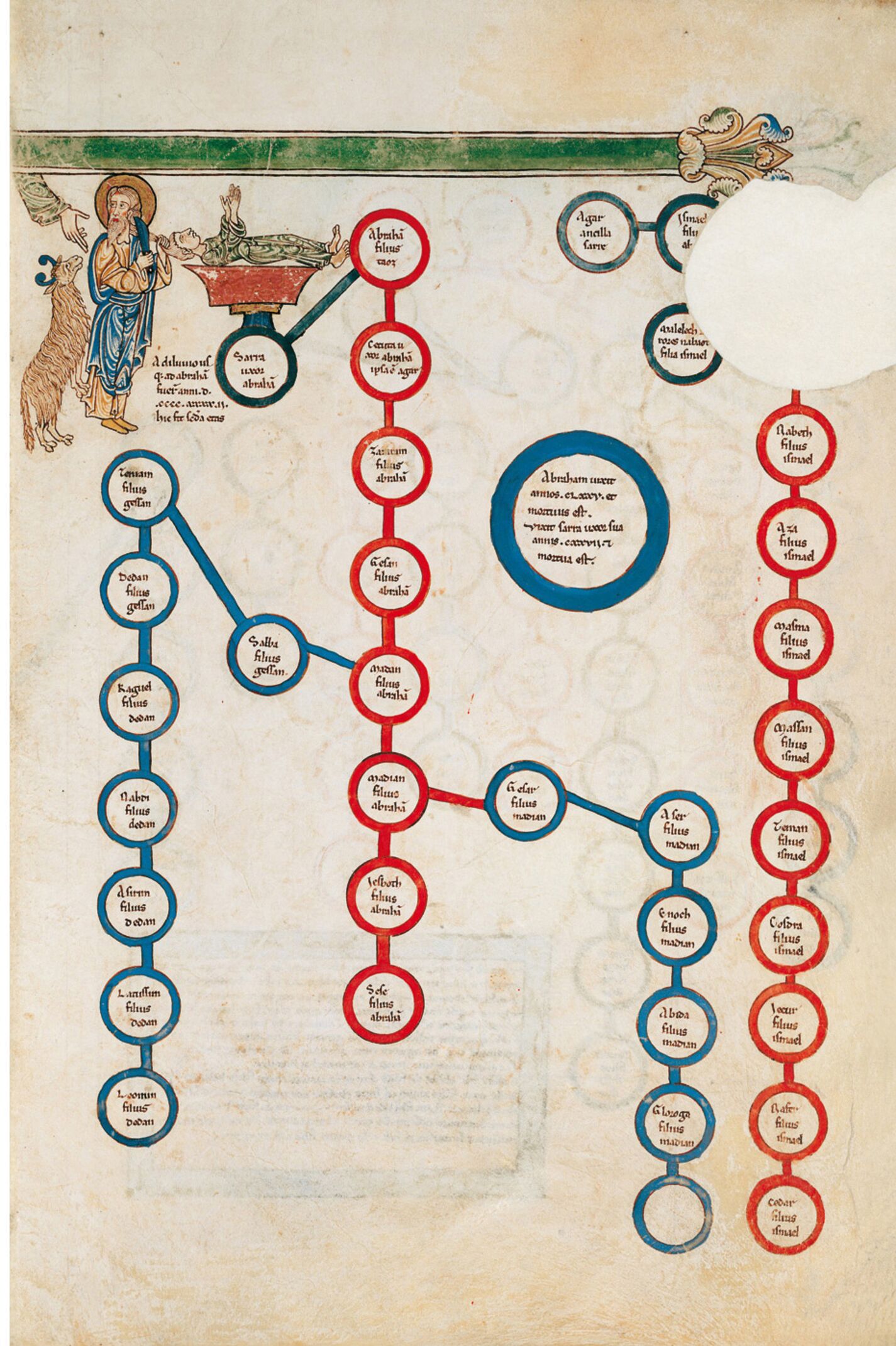As in the Bible of 920, the sacrifice of Isaac followed western iconographic tradition found on the Iberian peninsula since Visigothic times. The composition of the capital where this scene is depicted in San Pedro de la Nave is revealing in this respect, for it is a transposition of the missing illustration traced onto stone, with the scene appearing in reverse. Furthermore, the textual reference beginning with the ubiquitous UBI is retained, a term found in all Beatus codices. The schematic iconography of this scene is based on a splendid illustration, from which, as occurs in the Gerona Beatus, almost all the texts that accompany the scene in the Fernando I Beatus have been eliminated, with only the indication of the start of the corresponding age remaining: [A diluvio usque ad Abraham fuerunt anni d.cccc. XXXXII hic sit secunda etas]. The illustration consists of the following elements: Abraham holding a large knife in his hand preparing to sacrifice his son Isaac lying upon an altar. The Hand of God prevents him from doing so and points to the ram climbing up towards the patriarch ready to be sacrificed.
Ángela Franco Mata
Chief of the Medieval Antiquities Department, Museo Arqueológico Nacional
(Fragment of the Cardeña Beatus commentary volume)

As in the Bible of 920, the sacrifice of Isaac followed western iconographic tradition found on the Iberian peninsula since Visigothic times. The composition of the capital where this scene is depicted in San Pedro de la Nave is revealing in this respect, for it is a transposition of the missing illustration traced onto stone, with the scene appearing in reverse. Furthermore, the textual reference beginning with the ubiquitous UBI is retained, a term found in all Beatus codices. The schematic iconography of this scene is based on a splendid illustration, from which, as occurs in the Gerona Beatus, almost all the texts that accompany the scene in the Fernando I Beatus have been eliminated, with only the indication of the start of the corresponding age remaining: [A diluvio usque ad Abraham fuerunt anni d.cccc. XXXXII hic sit secunda etas]. The illustration consists of the following elements: Abraham holding a large knife in his hand preparing to sacrifice his son Isaac lying upon an altar. The Hand of God prevents him from doing so and points to the ram climbing up towards the patriarch ready to be sacrificed.
Ángela Franco Mata
Chief of the Medieval Antiquities Department, Museo Arqueológico Nacional
(Fragment of the Cardeña Beatus commentary volume)